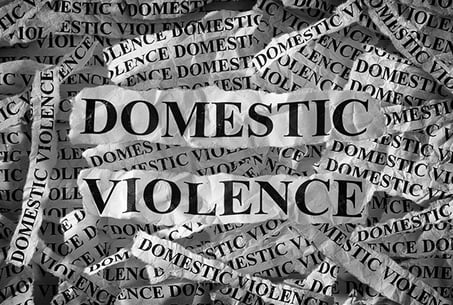How to Ensure Domestic Violence Isn’t Lurking in Your Fatherhood Program
2 min read
Date Published: 09/11/2019
Last Updated: 04/26/2023
National Fatherhood Initiative Blog / Latest Articles
2 min read


How would you know if a dad in your program has been a victim or a perpetrator of domestic violence? If you did know, how would you navigate that situation?
Domestic violence is a serious problem affecting families and communities. It is a pattern of abusive behavior in any relationship that is used by one partner to gain or maintain power and control over another intimate partner. It can involve physical, sexual, emotional, economic, or psychological actions (or threats of actions) that influence another person.1
One in five women experience domestic violence at some time in their lives, and over 15 million children witness domestic violence each year.2 Given these statistics, many funders require their grantees to address domestic violence—including the United States Department of Health and Human Services, the largest funder of fatherhood programs—either through direct service components or, at minimum, domestic violence protocols.
A domestic violence protocol articulates, in writing, how a program screens for, identifies, and responds to instances of suspected or present domestic violence. Within the context of your fatherhood program, a well-structured and thoughtfully implemented domestic violence protocol can help ensure that domestic violence within your dads’ families are safely, routinely, and consistently identified and appropriately addressed.
Essentially, a good protocol is a tool that ensures adequate supports and safeguards are in place for families dealing with domestic violence. A protocol can be an important resource for anyone involved with your program, providing concrete guidance and clarifying roles and responsibilities for different program staff and partners.
According to www.futureswithoutviolence.org, a domestic violence protocol should include
at least the following elements:
For more details on these elements, click here.
If you haven’t created a domestic violence protocol, we strongly recommend that you contact your state coalition against domestic violence for technical assistance. You can find your state contact here.
Additionally, National Fatherhood Initiative® (NFI) offers a three-part Understanding Domestic Violence™ booster session that can help you raise the awareness of your dads (and your facilitators) of what domestic violence is and, as a result, address domestic violence in a preventive manner. This session has information on domestic violence, such as its cyclical nature and recognizing its red flags. It’s a great complement to a fatherhood program, such as NFI’s evidence-based 24/7 Dad® program, or as a stand-alone workshop.
Developing a domestic violence protocol and including direct service components that address it can have a profound impact on the families you serve.
Do you have a domestic violence protocol in place?
If not, what are a few next steps you can take to establish one?
1 United States Department of Justice. Retrieved March 2015from http://www.justice.gov/ovw/domestic-violence..
2 Whitfield, CL, Anda RF, Dube SR, Felittle VJ. 2003. Violent Childhood Experiences and the Risk of Intimate Partner Violence in Adults: Assessment in a Large Health Maintenance Organization. Journal of Interpersonal Violence. 18(2): 166-185.
Date Published: 09/11/2019
Last Updated: 04/26/2023
Download the ebook to learn how to create fatherhood initiatives that engage every sector of community life.

Train Your Staff
Fatherhood Programs
Fatherhood Data
© 2025 National Fatherhood Initiative®. All rights reserved.